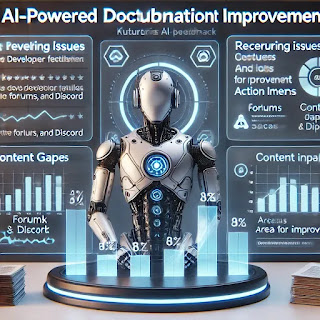Avoid These Common Mistakes in Developer Documentation (and How to Fix Them)
Clear and concise developer documentation is the backbone of successful developer adoption and engagement. When documentation is well-structured and easy to follow, developers can quickly understand and implement your APIs, SDKs, or platforms. However, many organizations unintentionally introduce critical errors in their documentation, leading to confusion, frustration, and ultimately, developer churn.
Here’s a look at the most common mistakes in developer documentation—and practical solutions to fix them.
🛑 1. Lack of Clear Structure
When documentation lacks a logical flow, developers struggle to find the information they need. Poor structure makes it difficult to differentiate between introductory content, API references, and troubleshooting guides.
Why It’s a Problem:
- Wasted time searching for relevant information
- Increased frustration and reduced trust
- Higher likelihood of incorrect implementation
How to Fix It:
✅ Use a clear and consistent layout
✅ Include a well-organized table of contents
✅ Separate sections by audience or use case
✅ Add navigation links for easy browsing
❗ 2. Outdated or Incorrect Information
Outdated documentation is one of the fastest ways to alienate developers. When changes to APIs, SDKs, or features are not documented promptly, developers may waste time on deprecated methods or unsupported features.
Why It’s a Problem:
- Mismatched expectations between code and docs
- Increased support tickets and complaints
- Reduced trust in product reliability
How to Fix It:
✅ Regularly audit and update documentation
✅ Track version-specific changes
✅ Add release notes to highlight updates
✅ Integrate automation to detect inconsistencies
📣 3. Ignoring Real User Feedback
Documentation that doesn’t incorporate developer feedback often misses the mark. Developers who struggle with unclear or missing information won’t hesitate to share their experiences—but ignoring that feedback leads to stagnation.
Why It’s a Problem:
- Missed opportunities to refine content
- Unaddressed pain points hinder user satisfaction
- Loss of valuable insights from real-world usage
How to Fix It:
✅ Encourage developer feedback through multiple channels
✅ Analyze community discussions and support tickets
✅ Prioritize documentation improvements based on common issues
✅ Use AI-powered tools like Doc-E.ai to extract insights from developer conversations
🧩 4. Overly Complex Language
Technical jargon and overly complicated explanations alienate both beginner and intermediate developers. If your documentation assumes too much prior knowledge, it can lead to misunderstandings and implementation errors.
Why It’s a Problem:
- Limits accessibility for junior developers
- Misinterpretation of key concepts
- Longer onboarding times for new users
How to Fix It:
✅ Simplify language and avoid jargon
✅ Provide context for complex concepts
✅ Include a glossary for technical terms
✅ Offer beginner-friendly tutorials alongside advanced docs
💡 5. Incomplete or Confusing Code Samples
Developers rely heavily on code examples to understand how APIs and features work. Incomplete or poorly explained code samples can leave developers guessing, leading to implementation errors.
Why It’s a Problem:
- Slower adoption and integration
- Increased likelihood of developer frustration
- More frequent support requests
How to Fix It:
✅ Provide complete, working code samples
✅ Include comments to explain key logic
✅ Demonstrate error handling and best practices
✅ Add usage context to each example
🎨 6. No Visual Aids or Diagrams
Text-heavy documentation can overwhelm developers. Without visual elements like diagrams, flowcharts, and screenshots, complex concepts can be harder to grasp.
Why It’s a Problem:
- Slower understanding of workflows
- Higher likelihood of missed concepts
- Reduced retention of information
How to Fix It:
✅ Incorporate flow diagrams to explain architecture
✅ Use screenshots to guide complex processes
✅ Include step-by-step visuals for tutorials
✅ Provide visual comparisons between methods
🔁 7. Inconsistent Terminology and Formatting
Inconsistent terminology confuses developers and creates unnecessary friction. When similar terms are used interchangeably or formatting standards vary, it disrupts the learning flow.
Why It’s a Problem:
- Increased cognitive load for developers
- Higher risk of implementation mistakes
- Difficulty referencing related concepts
How to Fix It:
✅ Standardize terminology across all documentation
✅ Create a style guide for consistency
✅ Use consistent formatting for code blocks and instructions
✅ Regularly audit content for uniformity
🔍 8. No Search or Navigation Assistance
If developers can’t quickly search or navigate through your documentation, they’re likely to abandon it. A poor search function or lack of contextual links makes finding relevant content tedious.
Why It’s a Problem:
- Frustration due to wasted time
- Reduced engagement with documentation
- Higher likelihood of seeking competitor solutions
How to Fix It:
✅ Implement an intuitive search function
✅ Add contextual navigation links
✅ Provide cross-references to related content
✅ Offer quick-access guides for common tasks
🚀 How Doc-E.ai Can Help Fix These Issues
Manual documentation audits are time-consuming and prone to oversight. Doc-E.ai leverages AI to analyze developer feedback, identify pain points, and automatically suggest improvements to your documentation.
✅ Extract insights from Slack, Discord, and forums
✅ Surface recurring developer questions and issues
✅ Highlight areas needing documentation updates
✅ Ensure your content stays relevant and developer-friendly
🎯 Final Thoughts: Improve Documentation, Increase Engagement
Developer documentation is a critical component of successful product adoption. By addressing these common mistakes and incorporating AI-driven insights, you can create documentation that engages, educates, and empowers your developer community.
Ready to revolutionize your documentation strategy? Try Doc-E.ai today!

.jpg)

Comments
Post a Comment